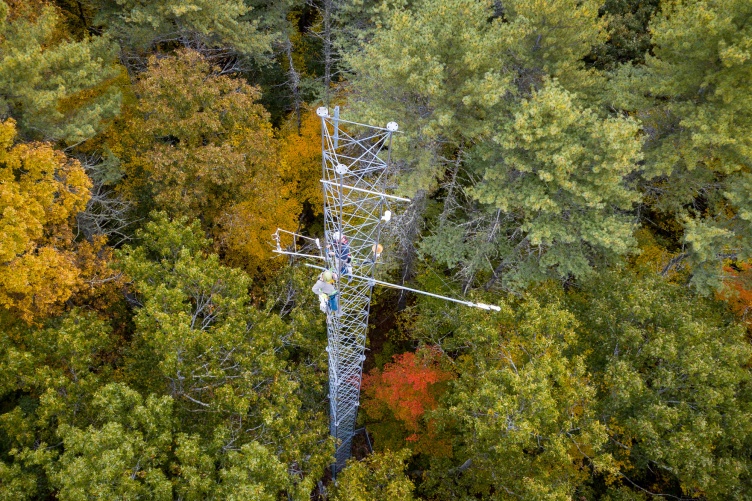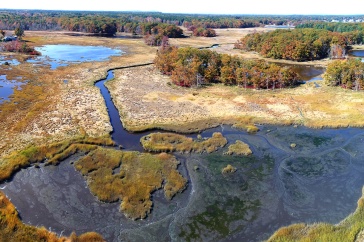
For scientists who have studied the negative impacts of too much nitrogen in the soil, air and water, a surprising new reality has emerged: A groundbreaking study based on long-term datasets indicates that nitrogen levels are actually declining in some regions of the world, including the remote forests of New Hampshire’s White Mountains, that aren’t exposed to excessive nitrogen inputs from human activities.
Scientists had previously theorized that changes in the environment — most notably, the rising levels of carbon dioxide in the atmosphere — would cause plants to need more nitrogen than was available to them. Plants require carbon and nutrients, like phosphorous, nitrogen and many others, to be available in a certain ratio in order to grow properly. With carbon dioxide levels rising by 50% in the last 150 years — reaching levels not seen since millions of years ago — it has thrown many systems out of balance, and plants in some areas simply can’t source the same amount of other nutrients needed to thrive. This study, published in Science, offers the first large-scale look at this phenomenon.

“Nitrogen pollution continues to be a major problem in many parts of the world, particularly in agricultural regions, developed landscapes and watersheds like New Hampshire’s Great Bay,” says Scott Ollinger, professor of natural resources and the environment and director for the UNH Earth Systems Research Center, who helped co-author the new study. “But in regions farther away from high nitrogen inputs, the long-term data show a different story.”
Ollinger has been keeping tabs on nitrogen levels in the northeastern U.S. forests for decades, and he joined forces with international scientists to pore through data from the past 250 years for this study. Using samples from tree rings and plant foliage, lake sediments, gas fluxes from soils, and various other indicators, they compiled the nitrogen trends and saw a steady decline over the last century in regions as seemingly disparate as the central U.S. grasslands, northeastern forests, the Arctic and portions of Africa and Eurasia.
Ollinger is not completely shocked by the study results; 20 years ago, he worked on an ecological computer model that predicted the possibility of nitrogen decline due to rising atmospheric carbon dioxide levels. He believes that is now playing out on a wider scale. “This is yet another reason why we should focus on decreasing our emissions of carbon dioxide into the atmosphere, so we can help our ecosystems to behave like they are supposed to, like they once did,” he notes.
The research has wide-ranging implications — decreases in nitrogen can alter the growth and nutrient content of plants, which leads to a suite of consequences, like decreased body size and reproduction rates for the insects and herbivores who feed on plant foliage. Alternatively, too much nitrogen in a system, like a river that receives nitrogen pollution from wastewater or agricultural runoff, can cause algal blooms that choke out aquatic life. The duality of nitrogen levels that are both too high and too low throughout the globe underscores the number of ways in which human activities can cause ecosystems to become imbalanced.
He acknowledges that the study results are somewhat difficult convey. “It’s not a reversal on what scientists have been saying — we’re still really struggling in many areas to bring nitrogen pollution levels down — but it’s important to note that many aspects of the environment are changing at once, and we have a long way to go before we understand their full range of consequences,” he adds.
-
Written By:
Rebecca Irelan | Institute for the Study of Earth, Oceans, and Space | rebecca.irelan@unh.edu | 603-862-0990

















































